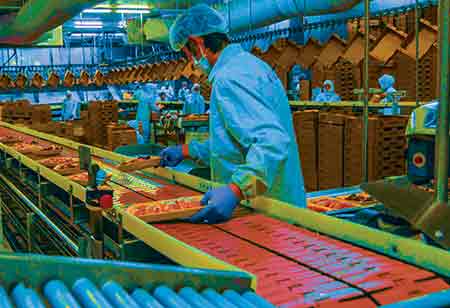Thank you for Subscribing to Food Business Review Weekly Brief
Ideal & Efficient Green Delivery Systems
For goods and services manufacturing companies that need delivery, last-mile options can be more expensive to the company.

By
Food Business Review | Saturday, February 12, 2022
Stay ahead of the industry with exclusive feature stories on the top companies, expert insights and the latest news delivered straight to your inbox. Subscribe today.

As the food products delivery market rises, the emission to the environment increases dramatically. Below are some ways to control the emission and make the system more efficient.
FREMONT, CA: For goods and services manufacturing companies that need delivery, last-mile options can be more expensive to the company. Yet, its effect on the environment is much worse.
With 28% of the U.S.'s greenhouse gases emitted into the atmosphere, the transportation sector has reserved a permanent seat in the front row for damaging our environment. The product delivery requires safer and healthier for the environment and should not be burning holes in the company's pocket. A conflicting common belief, an environmentally safe and conscious approach is the most efficient delivery operation.
Procedures to make the delivery eco-friendly and efficient are:
1. Route Optimization:
The ideal route will cover the most stops per round while running only a few miles compared to the regular course. With efficient optimization, the drivers cover less mileage and lower the emissions rate. Of course, this method also gives limitations equally, but it can be superseded by understanding the logic and functioning of route planning and supportive tools.
2. Cut those Emissions:
Companies are pushed to amplify their efficiency and sustainability while minimizing costs with pressures from all sides. Businesses are thinking outside the box to reduce emissions to address this. Improvements in technologies like drones, autonomous electric cars, and delivery bots can be used to avoid emissions altogether. It is also crucial to reduce the dependency on gas or fossil fuels and tackle this issue by utilizing alternative forms of energy. Thus, converting the delivery fleet into green machines becomes necessary by switching to electric or hybrid vehicles and having the old-fashioned bicycle make local deliveries.
3. Efficient Resource Management:
Despite the scale of the delivery fleet, any measures taken against environmental pollution by enterprises will result in enhanced efficiency. Speaking of planned deliveries, dispatchers can coordinate accordingly with the delivery team to make the process as efficient as possible. When impromptu or on-demand deliveries are received, a separate system can be utilized, wherein the vehicle already out for delivery will not be dragged back. Rather, a new delivery agent will travel to the destination in the most optimized route. When located in the same neighborhoods, on-demand deliveries can be grouped, and locally-placed ones can be delivered by bikes.
4. Delivery from Store:
Enterprises must maintain inventory visibility and germinate a healthy integration between the inventory data and the order information. In addition, it can support in making deliveries from the nearest store to the customer. A late study has observed that a package travels thousands of miles before arriving at its destination. This is shocking when analyzed because the product available in the nearest store was often delivered from a remote warehouse, encouraging the wastage of fuel. By choosing the store delivery option, brick-and-mortar shops can provide instantly and sell food products with shorter shelf life first.
5. Schedule the Deliveries:
Based on an Accenture strategy report, 36% of online shoppers choose to wait longer for free delivery instead of paying extra for one-day delivery. Apropos to this, enterprises can give options to customers as per the delivery suggested by the company. However, the on-demand deliveries are dissolute and a luxury that most customers reject when charged extra.
With lots of ways to reduce the carbon footprint and save extra costs levied on the company while maintaining the product's freshness and character, enterprises need to enforce the strategy to go green. The companies who put additional effort into being eco-friendly in their delivery strategies will eventually find out after applying that being green is rewarding.






